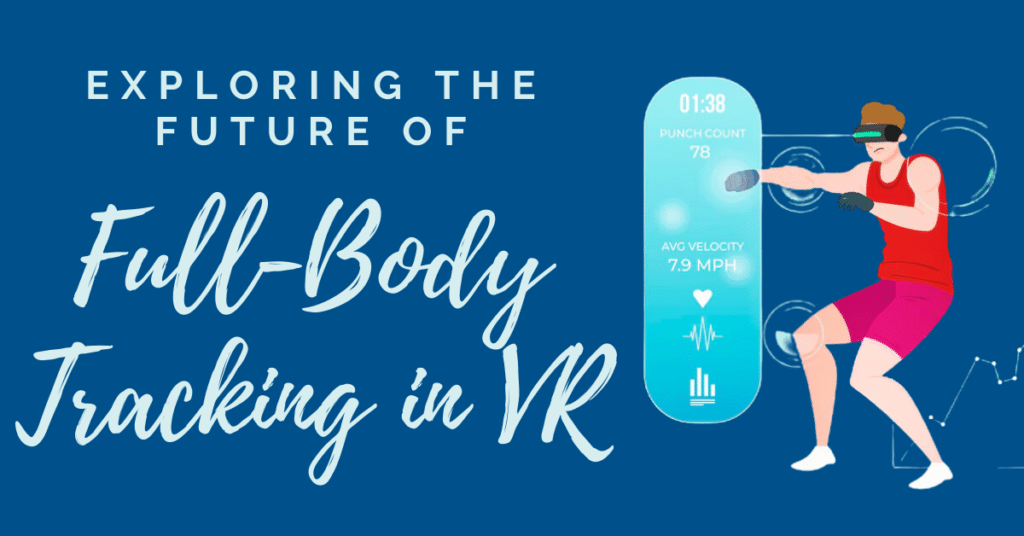
Over the last five years, VR has gotten more immersive and engaging. This is an interesting new feature of full body tracking, which mirrors user bodily motions in VR. As virtual reality moves into the future, VR will revolutionize the way gamers, fitness buffs and social chatters interact with the real world. In this article, I talk about future, limitations, and weird powers of VR full body tracking.1. So what is VR Full Body Tracking?The full body virtual reality tracking collects and translates a user’s full body, not just the head and hands. Standard VR does not record head to toe motions while full body tracking does. In doing so, the virtual environment comes close in fidelity to the real world, and even allows the user to strut their stuff just as they would in real life.To track a user’s full body, motion capture suits, or body trackers are used. The VR system uses the data to make the virtual avatar more realistic and engagize.2. Current full body tracking mechanismsThere isn’t a whole lot of skl when it comes to full body tracking, but in VR systems there are plenty of them that support it. Among these technologies:Motion-capture suitsAdvanced full body tracking system is something like Xsens and Rokoko motion capture suits. In these suits, sensors turn the wearer’s motions into VR. They are able to monitor small motions from incredible precision. They are very expensive and you have to set them up.Trackers and sensors outsideAnother common form of the full body monitoring technology is using external sensors and trackers. With the HTC Vive Tracker users can link them to their bodies and track foot and waist motions. And they can better depict the user’s virtual motions when used with VR headsets and controllers.Camera-Based SolutionsSome VR systems have cameras to capture user movement already. Computer Vision and AI powers these cameras to watch body movement. While harder to do, it is less accurate, and more affordable and easier than the sensor based approaches.3. Future VR Full-Body TrackingVR full body tracking is promising as technology progresses. Here are some intriguing developments for the future:More Accuracy and PrecisionTechnology will increase the full body tracking speed. Face expressions, finger motions, and eye-tracking will be tracked in the future with future tracking systems. It will increase VR details and accuracy. More natural with greater accuracy, users may complete tasks, communicate with other gamers, and explore the virtual world.More Wireless, More Accessible OptionsMost full body tracking systems require cumbersome suits or many sensors. At that time, future advancements should produce lightweight, comfortable, and simple to set up wireless measuring devices. It might make full body monitoring more affordable to consumers.Machine learning, AI integrationAI and machine learning will enable full body tracking possibilities. They make systems more accurate by allowing them to recognize, and even anticipate, user motions. For the more immersive part of VR, AI can also create more lifelike avatars that will react to the user’s body language and roles taken as it watches them during VR adventures.Made for Improved VR Social InteractionWith full body monitoring, virtual reality social interactions had better adjust. It means users will watch their avatars do a full variety of motions, not just head and hand movements. It will help to make VR socializing more natural and interesting whether you’re at a virtual event, playing a game with friends, or meeting. How to understand and replicate body language will help virtual communication.4. Limits and IssuesFull-body tracking in VR has a bright future, but it faces numerous obstacles:• Cost and Accessibility: The range of full-body tracking systems is costly and usually requires special equipment. Yet their accessibility to casual users, and even gamers, is limited. As technology continues to advance we want full body monitoring to become more inexpensive and accessible.• area Requirements: Sometimes full body tracking require enough space for user movement. However, home VR experiences face space constraints, and smaller solutions could be useful.• Motion Sickness: Certain gamers may find full body tracking worsens the motion sickness. To avoid pain and get seamless interactions, developers must optimize tracking systems and virtual worlds.5. Conclude: VR’s next stage is full body tracking. As technology improves we should expect more realistic, accessible and dynamic VR experiences that marry the virtual with the real. As human mobility and AI improve, full body tracking will become common in gaming, fitness, social VR and more.Today’s VR is exciting and full body tracking is going to be what drives it. The further we get into the future, the more that virtual worlds will become more immersive, realistic, and accessible.